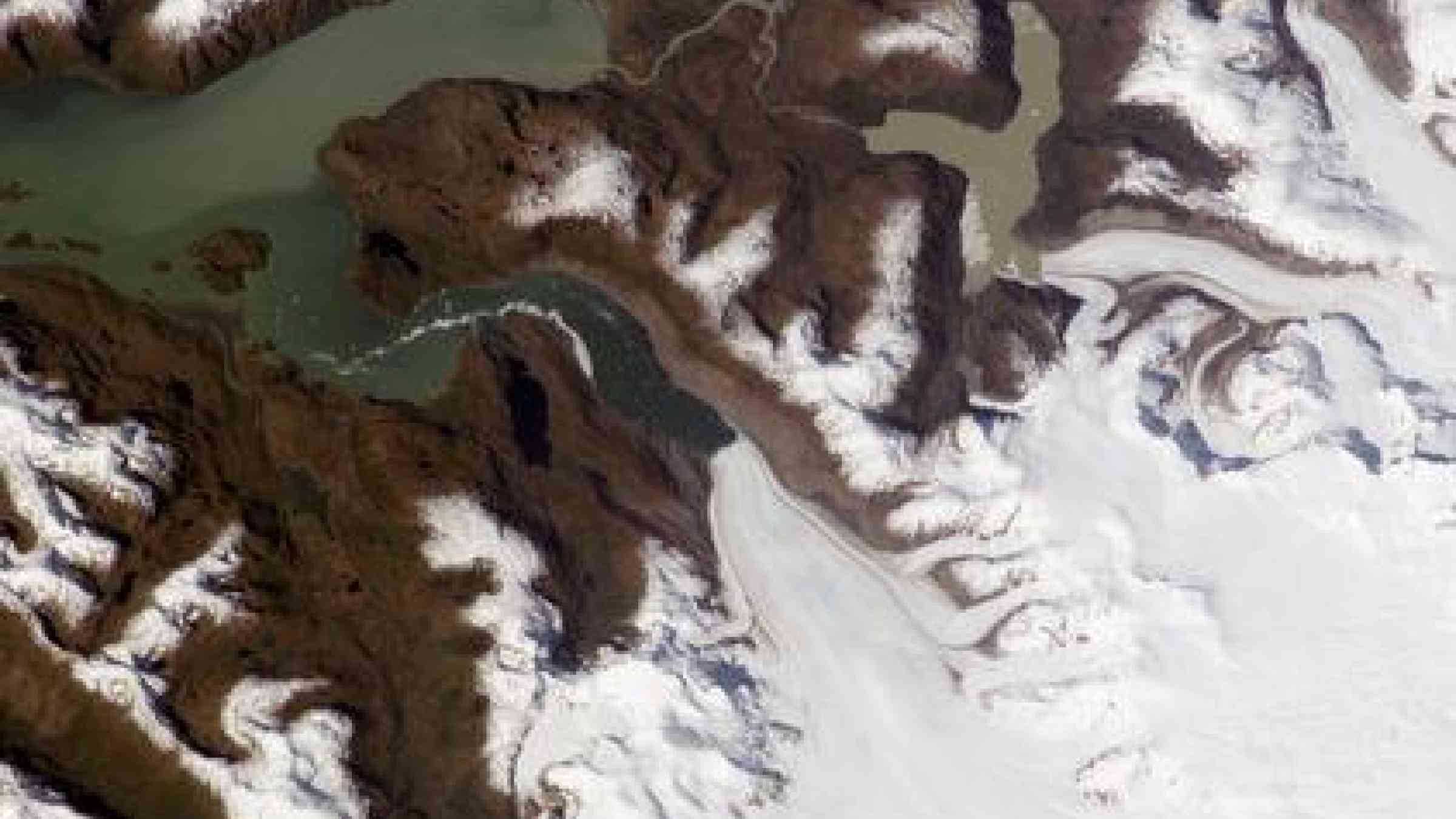Thieves join global warming in attack on iconic glacier

Jorge Montt Glacier, Southern Patagonian Ice Field, Chile (Photo: NASA)
GENEVA, 2 February 2012 - Climate change was a key driver in 2005 when 168 UN member states agreed on an international blueprint for disaster risk reduction but there is no reference in the Hyogo Framework for Action* to the environmental threat posed to the world’s retreating glaciers by criminal gangs.
Police in Chile are now investigating a criminal gang implicated in the theft of 5,000 kilos of millennia-old ice from the 454-square-kilometer Jorge Montt glacier which is melting at a rate of a kilometer (0.6 miles) per year making it one of the world’s most iconic symbols of global warming.
Mining for ice could pose a major additional threat to the glacier which is situated in the Bernardo O’Higgins National Park and is part of the 13,000 square kilometer Southern Patagonian Ice Field, the third largest frozen land mass after Antarctica and Greenland.
Margareta Wahlström who heads the UN office for disaster risk reduction, UNISDR, said: “The authorities in Chile are to be congratulated on clamping down on this illegal activity. The Jorge Montt Glacier and other major ice-fields are a precious part of our common world heritage and important yardsticks by which we can measure how man-made global warming is threatening the world’s water supply and damaging the environment. They deserve all the protection we can give them including safeguarding from this type of vandalism.”
The prosecutor in the case reported this week that those involved in the theft had been identified as a result of the investigation which followed the arrest of the driver of a refrigerated-truck last Friday. The truck was intercepted in the southern Chilean town of Cochrane.
Chile’s Centre for Scientific Studies (CECS) has said that several of the country’s glaciers are shrinking because of global warming but the much-studied Jorge Montt is one of those shrinking the fastest.
A NASA study in 2000 found: “Conventional topographic data from the 1970s and the 1990s were compared with data from NASA’s February 2000 Shuttle Radar Topography Mission to measure changes in the volumes of the 63 largest glaciers in the region over time. The researchers concluded the thinning rate of the Patagonia icefields more than doubled during the period from 1995 through 2000 versus the period from 1975 to 2000.”
In December 2011, glaciologist and CECS researcher, Andrés Rivera, published a new study through a series of 1,445 time lapse photos between February 2010 and January 2011 which showed that the glacier had retreated by a kilometre during that time.
He was quoted as saying that global warming is a factor and that the glacier is melting especially quickly because it partly rests in the waters of a deep fjord.
How do you put a price on a retreating glacier? Adding insult to injury, the initial assessment is that the 5,000 kilos of ice was worth a measly 3 million Chilean pesos or US$6,160.
*The Hyogo Framework for Action 2005-2015: Building the Resilience of Nations and Communities to Disasters was endorsed in 2005 by 168 countries in order to achieve “the substantial reduction of disaster losses, in lives and in the social, economic and environmental assets of communities and countries.”
Jorge Montt Glacier, Chile (English) from Centro de Estudios Científicos on Vimeo.
Explore further
Also featured on
Is this page useful?
Yes No Report an issue on this pageThank you. If you have 2 minutes, we would benefit from additional feedback (link opens in a new window).